Enclave, Turbo Verano lead Buick into 2013
By John Gilbert
LOUISVILLE, KY. — Buick surprised a lot of observers by escaping the ax when General Motors tried to hold off an inevitable bankruptcy by eliminating the Pontiac, Oldsmobile and Saturn brands. It was a surprise because Pontiac always had been GM’s performance-oriented line, Oldsmobile had become an outlet for progressive and high-tech engines, and Saturn had been a younger oriented new-age brand, while Buick’s reputation was strong only with aging loyalists.
But Buick had established a foothold in China, which was emerging as a major world auto market, and GM took a major gamble and not kept the name alive, while trying to infuse its models with new blood and new life. Buick has paid the corporation back in spades already, and hopes to expand its market presence for the 2013 model year with a newly empowered Verano Turbo, and a revitalized Enclave SUV.
Buick summoned a gathering of the nation’s automotive media to Louisville for the first chance to drive the two new models. By comparison with some of the flashiest new competitive vehicles, the new Verano and Enclave don’t look strikingly different from the 2012 models. Their “beauty” is more than skin deep, and in fact is almost all under the skin.
The Enclave was a big hit when first introduced, and it has evolved into a major player as the top seller among luxury mid-size SUVs, such as the Acura MDX, Audi Q7, Lincoln MKT and Volvo XC90. Adding luxurious interior features and classy exterior styling gave the Enclave a higher status than its body-on-frame siblings at Chevrolet and GMC. In its fifth year, Buick sold 57,783 Enclaves, and it has proven to be the largest selling Buick model through 2012. So for 2013, changes are subtle, with a new grille that stands taller, flanked by new fenders, while new LED lighting front and rear and interior refinements are the biggest changes.
With the same 3.6-liter V6, improved with direct-injection technology for smoother distribution of its 288 horsepower and 270 foot-pounds of torque, and a 4,500-pound towing maximum, the Enclave can house either seven or eight occupants in its three rows of seats. It is 201.9 inches long, on a 118.9-inch wheelbase and it weighs 4,724 with front-wheel drive, or 4,922 with all-wheel drive. A refined suspension combines cornering stability with traditionally compliant comfort. With highway estimates no more than 22 mpg with AWD and 24 with FWD, the Enclave depends more on its power and luxurious qualities than fuel economy, but the formula has worked. Buick officials put their objective simply, to “improve the things that can be improved, and keep the things that worked well.”
Inside, the Enclave has new instrumentation with more soft materials and adjustable ambient lighting, plus expanded touch-screen control for radio and revised heat/air controls. Special emphasis was placed on encradling the occupants and to showcase premium materials.
Enclave pricing starts at $38,270 for the 1SD with Convenience; $43,285 for the 1SL with Leather; and $46,450 for the 1SN Premium model.
A major feature for 2013 Buicks will be that among the 10 strategically placed airbags will be center airbags in the front seats, designed to inflate to prevent any chance of front seat occupants to hit heads in the event of an accident. There also will be new rear visibility cameras with a cross-traffic feature that aids backing out of a parking slot.
The Verano strives to be more of a compact Regal than a gussied-up Cruze, and buyers interested in a smaller Buick will appreciate the added zest from the turbocharged 2013 model. The car has a solid heritage already, being distilled from one of Opel’s leading compacts.
A portion of Buick’s success in China — and its opportunity to stay alive at GM — is because the corporation has rebadged as Buicks some of the more successful midsize and compact models from Opel, its German outlet. A version of the established Opel Vectra became the Saturn Aura several years ago, and a year later another version became the new Chevrolet Malibu. Both Aura and Malibu won successive North American Car of the Year awards.
The Aura was joined by an impressive compact, also a twin of an Opel. As Saturn joined Pontiac and Oldsmobile on GM’s extinct list, the Vectra was redesigned as the Opel Insignia, which was duplicated as the new Buick Regal. The Regal immediately helped Buick in its attempt to capture a younger audience, while the larger LaCrosse maintained its popularity with traditional Buick buyers. The Regal added a high-performance model, but the auto world was looking for new and more compact vehicles with improved fuel-efficiency, and GM responded by again tapping Opel’s impressive stable, creating the Chevrolet Cruze Buick Verano — both of which were the newest versions of Opel’s redone compact.
The Verano gave Buick an interesting new vehicle, but those who may have recalled Buick from its V8 and large V6 days criticized its lack of power. Despite the complaints, the Verano accomplished two very important objectives for Buick: 1. It lowered the average age of buyers, with over 40 percent being under 30; 2. It gained conquest buyers, as 52 percent of Verano buyers were new to Buick.
Those figures could improve even more in 2013, with the Verano Turbo. Buick had borrowed the turbocharged version of the 2.0-liter 4-cylinder that was designed for Opels to speed across German autobahns, and fitted it into the Regal to make the GS model. Its success made it an easy transition into the Verano for 2013.
While the base Verano starts at $23,965, rising to $25,260 with the Convenience package, and $27,640 with the Leather package, the Turbo model starts at $29,990. With variable valve timing and direct injection, the 2.0-liter 4-cylinder produces 250 horsepower at 5,300 RPMs and 260 foot-pounds of torque, 90 percent of which occurs all the way from 2,000-6,500 RPMs. The engine has double-feed turbocharging, which means the each feed from the turbo feeds two of the four cylinders.
Buick says 0-60 mph can be reached in 6.2 seconds with the Turbo cranked to maximum boost of 17 psi. Fuel economy is 20 mpg city/31 highway with the 6-speed manual transmission — which is called a “no-cost” option. It wasn’t too many years ago that the manual was standard and you paid extra for the automatic. After that, of course, there was a stretch where only automatics were available in Buicks, with no stick. Now you pay for the automatic, but can choose the stick — only on the Turbo — for no extra charge. Ah, progress.
The Verano Turbo also has 20 percent stiffer specially-tuned suspension, and a pleasing increase in steering effort, compared to the too-light feel of the normal Verano.
After driving the Verano Turbo briskly through the rolling hillsides of Kentucky, my co-driver and I agreed that its handling was a definite improvement over the standard Verano. The suspension architecture is the same but the Turbo is tuned differently, although one Buick official said there was some thought of softening the suspension back up a bit, because “it is still a luxury car, after all, and people will expect more comfort.” Not, I would say, if those potential customers are under 30 or 40 and willing to trade a bit of softness for more of a high-performance feel in cornering.
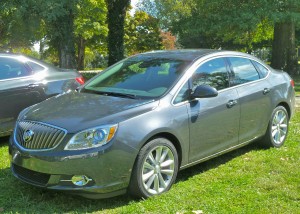
Verano's 2.0 Turbo is shared with Regal GS, entirely different from identically sized Malibu engine.
A very curious fact is that while GM likes to nickname its engines “Ecotec,” it seems the Ecotec 2.0 Turbo in the test Verano is getting expanded use, with the same engine being offered in the Chevrolet Malibu, and in the new compact Cadillac ATS as well as the Buick Regal GS. Not so, Buick engineer Gary Altman explained. The 2.0-turbo in the Verano is the same as in the Regal GS, and came from Opel, where it has been named to the coveted Ward’s Top 10 global engine list. The 2.0-turbo engine in the Malibu and Cadillac ATS is a completely different engine.
Both are made in different U.S. engine facilities, but why, in the name of maximizing engine-building efficiency in the post-bankruptcy days at GM, would the company make two identical engines, both with turbocharging, and both delivering similar power? The two have different capabilities, with one more easily used for both transverse (front-wheel drive) and longitudinal positioning. The Buick engine, which began life designed in Germany, is an impressive engine for current use, while the engine built for the Malibu and ATS is an evolutionary engine designed to meet future emission and fuel-efficiency standards.
Comments
Tell me what you're thinking...
and oh, if you want a pic to show with your comment, go get a gravatar!


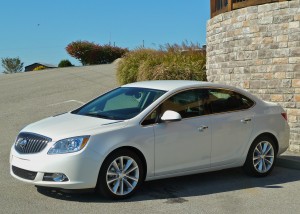
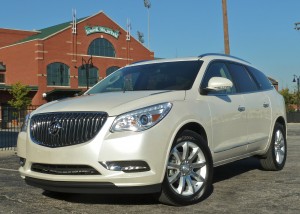
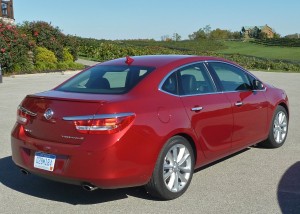
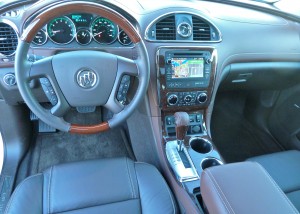
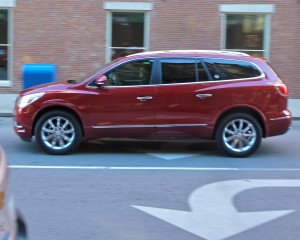
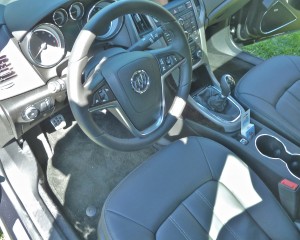
 John Gilbert is a lifetime Minnesotan and career journalist, specializing in cars and sports during and since spending 30 years at the Minneapolis Tribune, now the Star Tribune. More recently, he has continued translating the high-tech world of autos and sharing his passionate insights as a freelance writer/photographer/broadcaster. A member of the prestigious North American Car and Truck of the Year jury since 1993. John can be heard Monday-Friday from 9-11am on 610 KDAL(www.kdal610.com) on the "John Gilbert Show," and writes a column in the Duluth Reader.
John Gilbert is a lifetime Minnesotan and career journalist, specializing in cars and sports during and since spending 30 years at the Minneapolis Tribune, now the Star Tribune. More recently, he has continued translating the high-tech world of autos and sharing his passionate insights as a freelance writer/photographer/broadcaster. A member of the prestigious North American Car and Truck of the Year jury since 1993. John can be heard Monday-Friday from 9-11am on 610 KDAL(www.kdal610.com) on the "John Gilbert Show," and writes a column in the Duluth Reader.